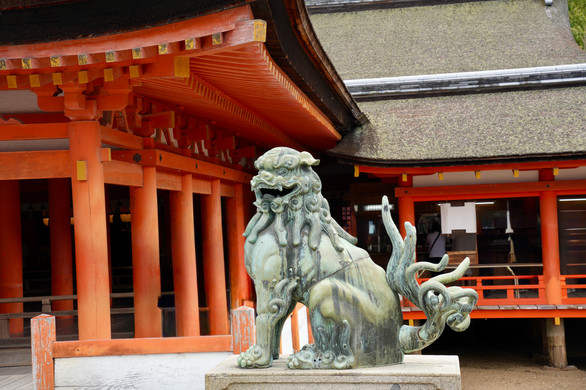HIROSHIMA
- chuckmeltzer
- Jun 9
- 2 min read
Updated: Jul 23
Japan has lots of islands. We took a ferry to Honshu and then traveled by high-speed train to Hiroshima.
Hiroshima’s Peace Memorial Park and the Peace Memorial Museum serve as solemn reminders of the atomic blast that devastated the city on August 6, 1945. Within the park lies the skeletal remains of a building now called the Atomic Bomb Dome, which was originally the Hiroshima Prefectural Industrial Promotion Hall built in 1914. The structure has been preserved as it was after the explosion, standing as a stark reminder of the immense destructive power of a nuclear bomb and the hope for global peace.
In the park, there is a bell with a crane dedicated to a young girl, Sadako Sasaki, who was two years old when the bomb struck and later died of leukemia at the age of twelve. She had started folding 1,000 paper cranes, hoping they would grant her wish for recovery. Cranes have since become a significant symbol of peace.
The bombs dropped on Hiroshima and later Nagasaki resulted in the deaths of an estimated 90,000-166,000 people and 60,000-80,000 people, respectively. The decision to deploy these bombs was influenced by projections that a ground invasion could lead to the loss of up to 1,000,000 American soldiers, along with Japan’s unwillingness to surrender. We inquired about our Japanese guide's view on why Japan initiated conflict with the US by attacking Pearl Harbor, but she didn’t provide a clear answer. From what I have read, it was driven by the desire to acquire more territory in the Pacific rich in oil and rubber. The US had imposed economic sanctions, including oil embargoes. Below is an image of the Atomic Bomb Dome, Peace Memorial and a photograph from the Peace Museum depicting Hiroshima after the bombing.
On the last day of our Nat Geo adventure, we set off by ferry from Hiroshima to Itsukushima Island popularly called Miyajima, for a full-day excursion. We visited the 12th-century Itsukushima Shinto Shrine, a World Heritage site built over the water, where a vermillion torii (wooden gateway) appears to float at high tide.
Roaming the island are deer who will steal your food. They were way more aggressive than any seagull or hungry pigeon. These kids were safe from the deer with their juice cups:)
We took part in a traditional tea ceremony, which was very peaceful and focused on customs and rituals. The ceremony is conducted in a specific way to showcase harmony, respect, purity, and simplicity. Cleanliness and tranquility are also key elements. Harmony is evident in how they coexist and cooperate in small, confined spaces.
The last dinner with the Nat Geo group took place at a restaurant featuring another lovely garden illuminated for the evening, and, like all the gardens, it was incredibly beautiful and enchanting. Overall, the people on the trip were enjoyable company. As anticipated, the average age was likely around 70, but there were no stragglers or complaints, except from me regarding the futons and the accommodations!















































Comments